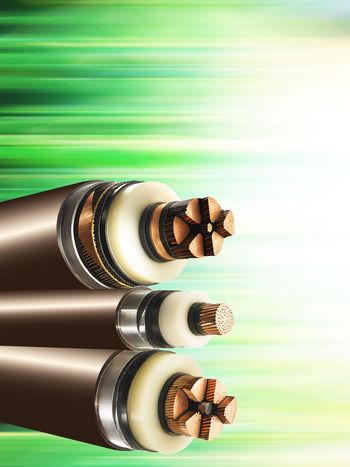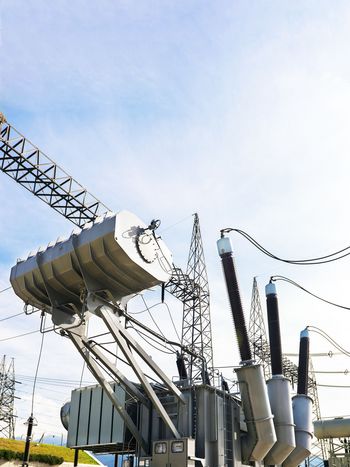Overhead Lines
by Herbert Lugschitz, Chairman & Wolfgang Troppauer, Secretary
Study Committee B2 covers the design, construction and operation of overhead lines. This includes the mechanical and electrical design and experimental validation of new line components (e.g. conductors, ground wires, insulators, accessories, structures and their foundations), the study of in-service line performance and assessment of aged line components, line maintenance, the refurbishment and life extension as well as upgrading and uprating of existing overhead lines.
Overhead lines play an important role for the Power System of the Future and its challenges. The activities of SC B2 are full in line with this important aspect of CIGRE´s mission.
B2 has Regular Members from 24 countries, 5 Regular Additional Members, Observers from 16 countries, and 7 Advisory Groups which coordinate.
The Technical Direction of SC B2 is:
- Increase the ampacity of existing lines
- Ensure reliable lines, or establish / improve the reliability of existing lines
- Ensure environmentally compatible lines
- Assessment of lines, methods, new tools
SC B2 cooperates with SCs B1 “Insulated Cables” and C3 “Power system environmental performance”. Environmental aspects are getting more and more important and the close relationship we developed with C3 makes the work of B2 and C3 more pertinent. The cooperation with C1 has the main goal to inform about actual developments and tendencies. B2 has “ambassadors” which take part at the Technical Meetings of B1 and C3, and vice versa.
The principal areas of interest of B2 are
- Route selection
- Optimized line design
- Line maintenance & service
- Refurbishment of existing lines
- Design specifications
- Increased power flow of existing lines
- Asset management guidelines
- Real-time monitoring systems
- New materials
- Sustainability of line components
- Minimizing the environmental impact of lines
The Customer Advisory Group CAG decides about future Working Groups, based on suggestions for new works and based on the needs of the customer target groups. The Target Groups of SC B2 are especially: Executives, Consumers, Regulators, Energy Traders, Equipment Suppliers, Consultants, Maintenance Groups, Asset Owners, Asset / Facility Managers, Governments, Authorities, Power System operator, Distributors, Grid Planners, Public, Media, Universities, Research Institutes, Schools, International Organizations: e.g. CIRED, IEEE, IEC, CENELEC, ASCE.
Meetings
Due to the Covid pandemic only video meetings took place since March 2020.
Nevertheless the main highlight 2020 was surely the CIGRE e-session in August / September. Despite the new approach the session could be realized very well without noteworthy problems.
In the Group Discussion Meeting GDM (former “the session”) B2 had 52 selected papers, including two papers from the “Next Generation Network” - one from Russia, one from Iran. All papers were presented ca. 10 minutes, each in pre-recorded videos. Only written questions were possible for the GDM and could be posted on KMS before the session or live during the session using the “questions” function. B2 received and discussed much more such written questions during this e-session (app. 3 hours discussion in total) than live during the physical sessions in the past. We had 7h 20 min video presentations. The total time of the B2 e-session was 13 ½ hours (presentations, introductions, opening, closure, breaks).
We had three preferential subjects:
- PS1: condition-based maintenance for increased sustainability
- PS2: enhancing overhead line performance
- PS3: resources and design considerations
Most discussed were new tower design, conductors, insulators, and line rating.
Working Groups, Overview
B2 has presently 24 Working Groups, 605 experts contribute in WGs (excluding multiple memberships in different WGs), from 45 countries. The SC supports highly the involvement of women in the SC. We have 8 % female members in WGs.
The current WGs are:
| B2.50 | Safe handling of fittings and conductors |
| B2.57 | Survey of Operational Composite Insulators Experience & Applications |
| B2.59 | Forecasting dynamic line ratings |
| B2.60 | Affordable Overhead Transmission Lines for Sub-Saharan Countries |
| B2.64 | Inspection and Testing of Equipment and Training for Live-Line Work on Overhead Lines |
| B2.65 | Detection, Prevention and Repair of Sub surface Corrosion in Overhead Line Supports, Anchors and Foundations |
| B2.66 | Safe handling and installation guide for high temperature low sag (HTLS) conductors |
| B2.67 | Assessment and Testing of Wood and Alternative Material Type Poles |
| B2.68 | Sustainability of OHL conductors and fittings – Conductor condition assessment and life extension |
| B2.69 | Coatings for Power Network Equipment |
| B2.70 | Aircraft warning markers and bird flight diverters for Overhead Lines – Experience and recommendations |
| B2.71 | Recommendations for Interphase Spacers of Overhead Lines |
| JWG B2/D2.72 | Condition Monitoring and Remote Sensing of Overhead Lines (lead B2) |
| B2.73 | Guide for Prevention of Vegetation Fires Caused by Overhead Line Systems |
| B2.74 | Use of unmanned aerial vehicles (UAVs) for assistance with inspection of overhead power lines |
| B2.75 | Application guide for insulated and un-insulated conductors used on medium and low voltage overhead lines |
| JWG B2/C4.76 | Lightning & Grounding Considerations for Overhead Line Rebuilding and Refurbishing Projects, AC and DC, (lead B2) |
| B2.77 | Risk Management of Overhead Line networks: A model for identification, evaluation and mitigation of operational risks |
| B2.78 | Use of High Temperature Conductors in New Overhead Line Design |
| B2.79 | Enhancing Overhead Line Rating Prediction by Improving Weather Parameters Measurements |
| B2.80 | Numerical Simulation of electrical fields on AC and DC Overhead Line Insulator Strings |
| B2.81 | Increasing the Strength Capacity of Existing Overhead Transmission Line Structures |
| B2.82 | Overhead Line Foundations for Difficult Soil and Geological Conditions |
| B2.83 | Mitigation of induced noises by corona activity in overhead AC and DC lines |
New Working Groups
The scope of work of new B2 Working Groups established 2020/2021 is explained hereafter.
B2.77 - Risk Management of Overhead Line networks: A model for identification, evaluation and mitigation of operational risks
Transmission and distribution overhead line (OHL) networks are exposed to a range of operating risks arising from severe climatic events (wind, lightning, etc), fires, vehicle collision, component failures, ageing, and others. These events affect safe operation/maintenance of the network, reliability and customer service, public safety and environmental damage, and potentially give rise to significant financial costs to the network operators.
Risk is measured by the likelihood of an event (hazard) that may cause harm and the consequence or outcome of that event. Risk management processes can be used to model OHL assets for identification, evaluation and mitigation of operational risks.
The effectiveness of risk management depends on its integration into the governance of an organisation, including decision making. Accordingly, the WG shall develop a generic risk management framework that can be customised to suit the specific needs of a power line utility.
Focal points are:
- Develop a risk model to identify hazards and likelihood of the occurrence (e.g. vulnerability assessment, failure mode analysis techniques and probabilistic modelling); assess impact (high/low probability events) and rank consequences based on risk acceptance criteria relevant to the particular utility in case of transmission and distribution separately.
- Identify and evaluate methods/treatments/actions for mitigation of risks, considering hierarchical approaches and ALARP principle.
- Establish guidelines (risk-based decision procedures) to assess options and selecting mitigation strategies to achieve target performance.
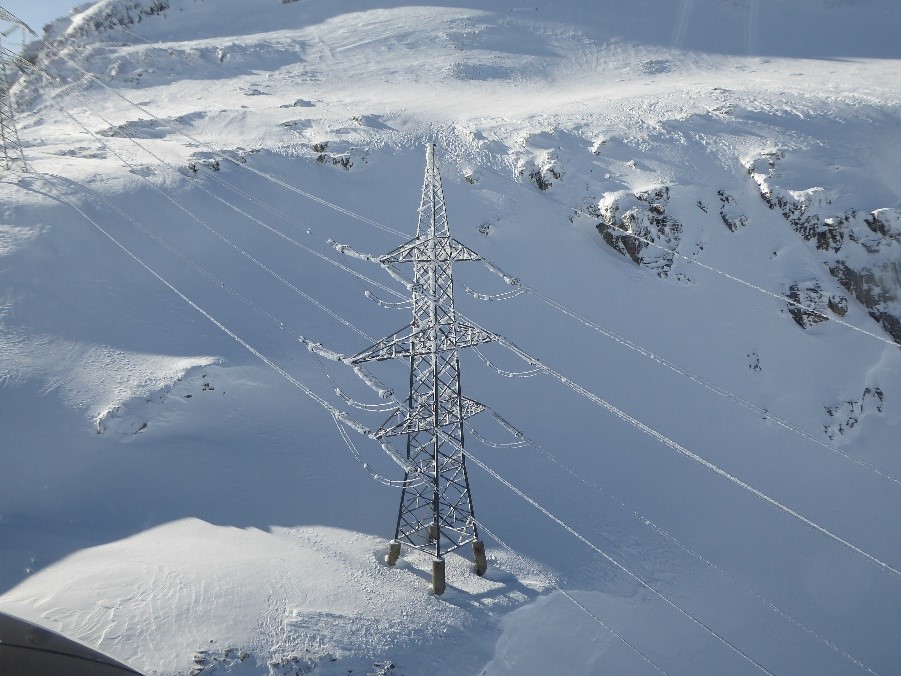
380kV line in the mountains, risk from topography
Case studies will include examples of both transmission and distribution networks, also to take cognizance of codes of practice for the design of OHL including loading criteria and considerations included therein, e.g. IEC 60826 and EN 50341.
B2.78 - Use of High Temperature Conductors in New Overhead Line Design
High temperature low sag (HTLS) and high temperature conductors may be used in new lines to increase the line’s thermal rating by 100% or more, without increasing significantly structure and foundation cost. The increased thermal capacity may reduce future power flow constraints due to unforeseen power flows, primarily after N-1 contingencies, or to avoid curtailment of renewable generation during periods of high generation. With the uncertainty of the magnitude and location of generation, the load on proposed lines is very difficult to predict. HTLS may be one way to provide a more robust design which can cater for unexpected loading without increasing initial construction cost excessively.
The bulk of the CIGRE literature about HTLS conductors concerns the uprating existing lines. Although multiple types of HTLS conductors have been commercially available for many years, technical guidance regarding the application of these conductors in new lines has been limited.
The scope is to Identify those new line designs where the use of HTLS conductor can be considered, also to enumerate the advantages and disadvantages as well as provide technical support for regulatory approval considering both environmental, safety, and economic issues.

Cross-section of conductors showing composite core covered with glass fibres envelope (left) or welded aluminium tube (right), TB 695
The main tasks of the WG include the following:
- Environmental issues: Right of way considerations, Reduction in tower height and line visibility, Structure geometry
- Electrical considerations: Thermal rating, Line losses, Electric and magnetic fields EMF, Audible noise, Operational constraints
- Mechanical considerations: Use of HTLS conductors in bundle configuration, Sag and tension, Creep, Vibration/galloping mitigation, Ice accumulation, Hardware, Maintenance
- Operations and maintenance: Tools and equipment, Live line maintenance considerations, Emergency operations,
- Economical considerations Overall line design: Initial and life cycle costs, Operational cost, Expected life of asset, Review of TB 638 “Guide to overall line design” as applied to HTLS conductors, Inclusion of HTLS in conductor selection process
B2.79 - Enhancing Overhead Line Rating Prediction by Improving Weather Parameters Measurements
Global climate change has motivated many countries to invest in Renewable Energy Sources (RES). For example, the European Union has the goal to have 20% of electricity generation coming from renewable sources by 2020. Besides the benefits the RES has for the environment, it also represents a challenge for electrical network operators.
Weather always plays a critical role in the operation of overhead lines. It has a significant impact on the electrical performance, in particular the ampacity, and economics of the electrical power networks. Weather data is systematically collected or measured, monitored and analyzed since the late 1800’s. As the technology advances, the demand for better understanding of the effects and accurate forecast are particularly evident by many overhead line engineers and network operators. Network optimization techniques such as use of Dynamic Line Rating (DLR) provide information to operators in real-time for better decisions in system operations.
Focusing on the line ratings (ampacity), the dynamic nature of the weather elements offers an economic opportunity to maximize the ampacity of overhead line conductors in the power system operation depending not only on a conservative static rating (e.g. mid-summer day) but also the prevailing weather conditions. Recent CIGRE work on dynamic line rating illustrates that its use has major advantages.
The thermal performance of overhead transmission and distribution lines can significantly impact on the overall reliability of supply and potentially exposes the network to higher risks.
For line rating forecasting, a collection of distributed weather data along the transmission network is important to obtain an accurate representation of the environment that the conductors are exposed.
The objective of this working group is to add value to existing transmission and distribution lines by looking into the current approaches of distributed environmental measurements such as techniques, development, utilization, performance, and applications for line rating prediction. Several CIGRE technical documents are referenced.
B2.80 - Numerical Simulation of electrical fields on AC and DC Overhead Line Insulator Strings
The availability of simulation results for insulator strings increased significantly in the last years. Besides other applications, the finite element method (FEM) and the boundary element method (BEM) are the most widely used numerical simulation methods for the assessment and evaluation of the electrical fields on insulator strings. Based on service experience and laboratory testing it is known that a high local electric field can lead to increased corona activity and ageing of insulators. A low and homogenous electric field distribution along the insulator string is beneficial for the longevity of the insulator string.
However the large number of available software solutions and vendors lead to different solutions and determined numerical results. Additionally to this, there is no standard procedure available to design the model of the insulator string, and how hardware, such as corona rings, conductor configurations, tower dimensions and important areas of the insulator like the interface design between housing material and the metal end fitting (triple point) have to be evaluated. Since no standard procedure is available, it is up to each transmission and distribution system operator to make sure their requirements are sufficiently tough. The proposed working group focuses on especially these aspects in order to make FEM/BEM simulation electric field calculations more reliable and comparable.
The results from this working group can be used by transmission and distribution system operators to compare the reliability of electrical field calculations on different insulator string configurations from different manufacturers. Producers of insulators and hardware components can use the established procedures to compare and improve their designs. The findings of this working group may help to define standardized simulation methods.
B2.81 - Increasing the Strength Capacity of Existing Overhead Transmission Line Structures
In many countries Transmission System Operators TSO have been facing strong restrictions to enable new corridors for the implementation of new overhead transmission line projects.
The solution, in many of the cases, has been to use existing right of ways for increasing power transfer capability by means of upgrading and uprating existing overhead lines. In the majority of such projects, reinforcements on the supports are required. In other circumstances, just “refurbishment” or “life extension” procedures are viable, even though, being valuable measures to extend the life of those still important assets.
From another perspective, high winds and ice storms and possible climate changes that have triggered failures of structures during the last decades, have resulted in extensive operations organized by TSOs to promote upgrading studies to strengthen transmission lines structures and/or their foundations.
The goal of this WG is reviewing the CIGRE TB 230 - Assessment of Existing Overhead Line Supports, to collect and register recent methods and techniques that have been used to upgrade the structural strength capacity of the transmission line structures (case studies) to fulfil the existing demands.
The WG discusses the design parameters, specific design considerations (for example serviceability criteria) and best design practices in upgrading, safety, refurbishment or life extension of transmission line structures.
A description on methods and materials used for reinforcing structures will be provided, and research before strengthening, when available are outlined and listed. Different reinforcing methods for upgrading supports are being evaluated, as well as different strengthening methods to withstand meteorological parameters. Influence on foundations will be described.
Life cycle costs analysis of different methods versus new structures is outlined, environmental impact of upgraded structures is be discussed.
B2.82 - Overhead Line Foundations for Difficult Soil and Geological Conditions
Routing new overhead lines OHL has become more and more a difficult task. The environmental and social constraints, as well as the increase of prices for getting a right-of-way can urge the planners to build OHL in extremely difficult terrain conditions such as mountains, flooded areas, landslides, swamps, etc.
Similarly, several utilities are no longer able to build new lines at all, with the result of reinforcing and uprating/ upgrading their existing lines. In such cases, structures and foundations need to be reviewed and strengthened as necessary. Where lines were built in difficult terrains, the foundation strengthening may be very difficult, depending on access and/ or conditions of soil and geology on site.
History shows examples of OHL failures caused by badly designed or improperly installed foundations. Some of them were destroyed by typically natural phenomena such as landslides, earthquakes, floods, storms, etc. Others have failures due to changes in the environment, some of them made by humans.
Especially for foundations in extremely difficult soil conditions and access limitations, the impacts from the surrounding environment need to be evaluated precisely. Such foundations in general require unique design and construction technologies, which are not prescribed by codes or standards.
The design and construction of foundations in difficult soil and geological conditions is still considered one of the most critical challenges for OHL designers, contractors and operators.
The aim of this new Working Group is to provide guidance on foundation options, and how to select reliable and cost-effective solutions for designing, constructing and maintaining foundations in difficult soil conditions.
To achieve this, objectives of the Working Group are the review available design tools, the review of various design methodologies used when selecting foundations for difficult soil conditions considering various security levels and cost considerations, the review of available foundation research results on 1:1 scale tests, the identification of foundation reinforcement methods used in remedial work and for upgrade projects, even considering replacing footing in some cases. Other objectives are to Carry out an industry survey to gather new materials/best practices for new designs as well as uprating / upgrading projects, to collect challenging case histories from the industry and OHL owners, and the review of benefits of various foundation designs from an operational and maintenance point of view.
B2.83 - Mitigation of induced noises by corona activity in overhead AC and DC lines
Induced effects of electrical field stress in conductor surface and fittings producing corona effects can lead to “corona induced noises” AN - Audible Noise and RI - Radio Interference. Concern about this is increasing.
In recent years, several methods and technical efforts to mitigate induced effects of corona activity have been developed that can help in reducing this effect. Increasing conductor size, new conductor technologies, surface treatments, cleaning and application of coatings are some examples of these efforts.
Under a theoretical and conceptual perspective, the geometry optimization of bundle configurations and phase arrangements have a great potential in reducing effects of corona activity and have not been implemented nor explored yet.
With respect to modelling of the phenomena, existing expressions for the prediction of induced noise levels were established by empirical correlations between values calculated of the electrical field stress in the conductor surface and the measured effect - the noises, detected at a determined distance. Such models have been adopted until now, despite of an almost general agreement about the need of revising them.
The purpose of this Working Group is to produce:
A review of existing methods for corona activity prediction (AN and RI); processes, components, and variables affecting induced effects of corona (i.e. shape of conductors and fittings, different configurations, weather conditions, altitude, noise of rain superimposed on corona noise, background noise); evaluation of the different factors causing lines noises, as well as the compilation of available solutions for mitigation of this unwanted effect.
The current state of the art for modelling and determination of induced corona effects is being reviewed
- simulating - review of excitation equations
- measuring - review of existing standards
- laboratory modelling – use of corona cage
Possible methods to reduce induced effects of corona activity including evaluation of effectiveness of each method are analysed (conductor surface treatments, conductor cleaning and coatings; conductor outer layer wire shape; conductor surface treatments - blasting, artificial aging; hollow conductors or hollow wires; bundle re-arrangements, reconductoring in existing lines; voltage adaption; phase arrangements and conductor bundle configuration, and its effects on the fittings electric field stresses and noises)
A survey will present acceptable limits, different national and international regulations and practices, including calculation methods, considerations for urban, rural and uninhabited areas. An analysis is carried out on the cross-interaction effects among methods to reduce induced effects of corona activity (e.g. increase of EMF when increasing internal clearances).

CIGRE active Working Groups / Call for experts
Publications
Technical Brochures
B2 has issued 92 Technical Brochures since 1994. Several B2 Working Groups finished in 2020 and early 2021 and published Technical Brochures. These are:
TB 831 - Compact DC overhead lines
The compaction of overhead lines in order to reduce their visual and environmental impact can make regulatory approvals easier. It can also allow their construction on narrower rights of way or shared with public transport routes. High voltage direct current (HVDC) lines can provide a high concentration of power and can have fewer “phases” than AC lines, as such they make excellent candidates for compaction. This brochure describes the electrical aspects of compact HVDC lines.
Compaction typically involves reducing the phase (pole) clearances, resulting in increased electric fields, audible noise, and other effects. Managing these effects is the key to the design of a compact DC line. In this brochure compacting is defined as reducing the cross section of a corridor (both the height and width) for a given power transfer requirement.
In general, HVDC links are designed to transmit large amounts of power over long distances, or to serve as system interconnectors. Both require high reliability and availability. Thus, insulation coordination and live maintenance are covered in detail.
This brochure explains the concept of DC overhead line compaction. Another Working Group (CIGRE TB792) covers the AC compact theory and practice. In AC lines the surge impedance loading, and hence the maximum power flow, can be affected by compaction. For DC power lines, however, increased power flow can only be realised by increasing the current through the conductors and/or increasing line voltage.
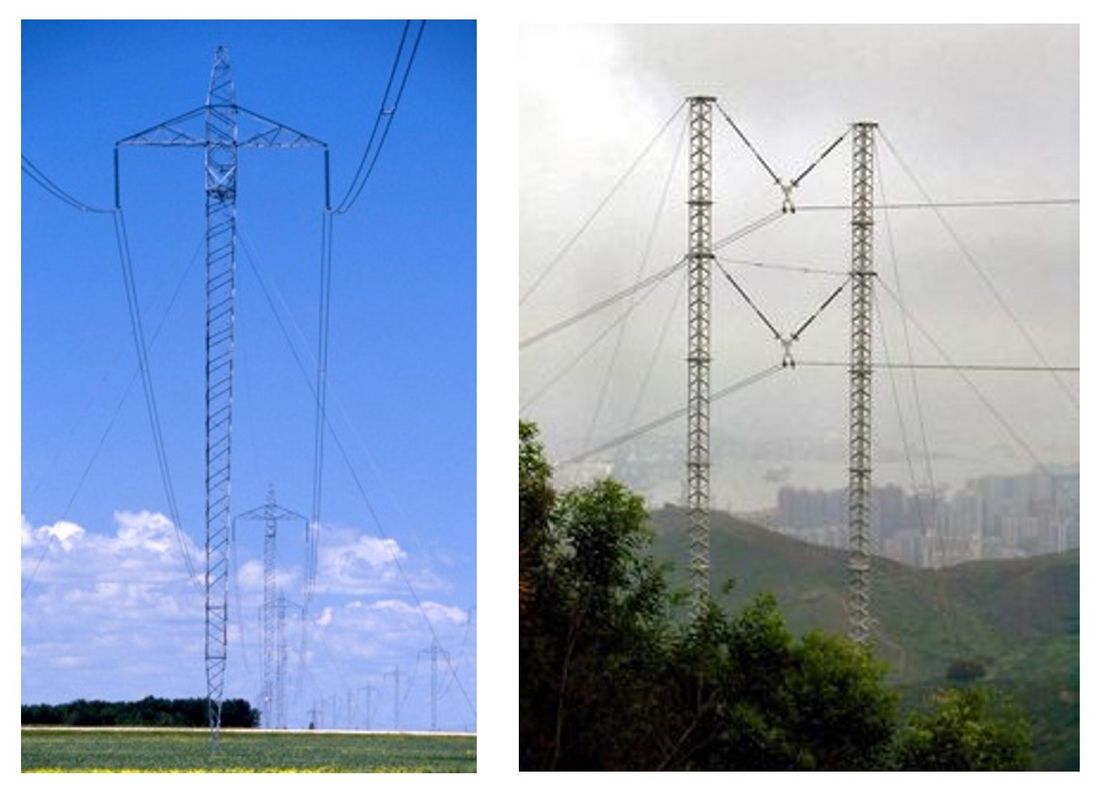
Typical configurations for bipole DC scheme
TB 828 - Vibration modelling of High Temperature Low Sag conductors – Self-damping characterization
High temperature Low Sag (HTLS) conductors are now installed regularly by some utilities around the world to increase the capacity of existing overhead lines and/or for other considerations. Electrical, thermal as well as mechanical aspects of HTLS conductors have already been covered in CIGRE Technical Brochures 331, 426, 695 and 763. To make sure that they will perform as expected over the long life of the line in which they are installed, the overhead line designers must be able to predict the behaviour of HTLS conductors with respect to aeolian excitation to avoid conductor failure due to fretting fatigue. Aeolian vibration modelling has already been covered by CIGRE WGs in Electra papers which have been put together in a CIGRE Green Book. Thus, the main objectives of this brochure are:
- To identify the effect of temperature on HTLS conductor self-damping
- To identify the effect of temperature variations and wind excited vibration cycles on HTLS conductor self-damping
- To identify a procedure to test HTLS conductor self-damping with the aim of using the measured self-damping data to simulate the HTLS conductor behaviour with respect to aeolian vibrations and design an adequate damping system whenever required
- To identify the effect of temperature variations combined with vibration cycles on the behaviour of the different types of clamping systems used for HTLS conductor fittings
Tests were performed in laboratories during the preparation of this brochure to evaluate the impact of temperature, thermal cycles and vibration cycles on conductor self-damping.
TB 818 - Transmission Line Structures with Fibre Reinforced Polymer (FRP) Composites
For a long time materials such as wood, steel and concrete, were used for transmission line structures. Advancement in material science and demand for solutions in the aerospace and maritime industries led to the development of new high-tech materials. Fiber Reinforced Polymer Composites (FRP) are one class of these emerging materials, and their use in transmission line structures bring many potential advantages, such as long service life, resistance to corrosion, light weight, high specific strength, high dielectric strength, environmental friendliness. The Technical Brochure provides information on the properties of these materials and their manufacturing technology, investigates in details their possible use in transmission line structures, and concludes that FRP structures are cost-effective alternatives to traditional solutions. It is therefore a reference document to be recommended to transmission line professionals.
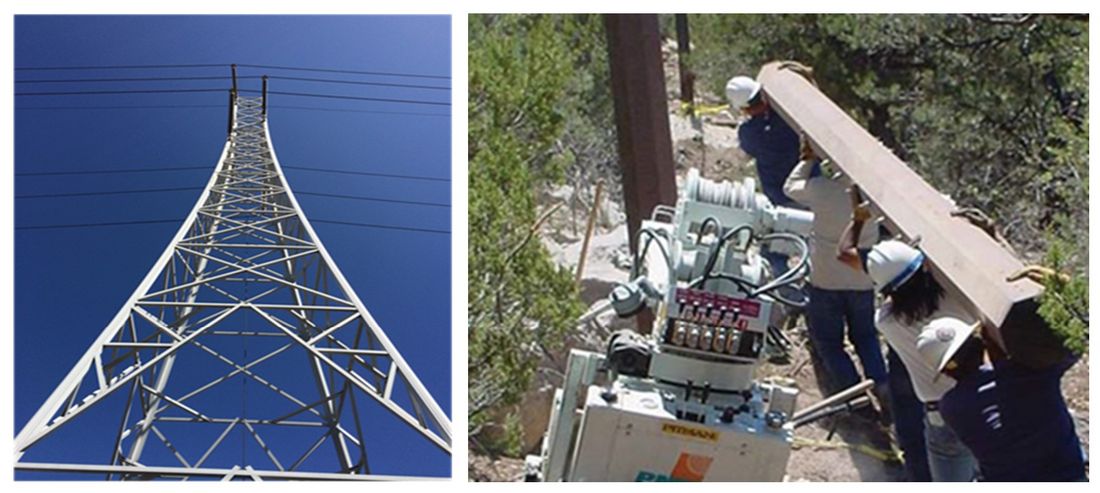
Left: 230 kV FRP lattice structure - Right: Shoulder carrying of FRP pole to installation site
TB 809 - Dynamic loading effects on overhead lines: Impact on structures
The Technical Brochure provides a comprehensive overview of dynamic phenomena impacting transmission line supports and dynamic analysis techniques employed to obtain transmission line response under time-dependent loads. The fundamental concepts of dynamic analysis are examined, focusing on the response of single and multi-degree-of-freedom systems, as well as modelling options and dynamic analysis parameters. Natural frequencies and vibration mode shapes of line supports are reviewed, and their effects on the line response outlined. Relevant dynamic events inducing time-domain dynamic loads acting on transmission line components, especially line supports, are examined. The sensitivity of overhead line supports to dynamic effects is addressed. A brief review of relevant published research employing advanced structural dynamic analysis techniques is provided to depict the importance of the dynamic performance of transmission line problems. Examples employing time domain dynamic analysis in predicting the response of typical line sections to dynamic loads are also provided. The necessity of dynamic analysis is discussed under the perspective of the standard practice of transmission line structural design.
TB 792 - Compact AC overhead lines
The increased urbanisation and demand for power in built up areas has led to increased power requirement in limited corridors. This has led to the need for more compact lines where the same power can be transferred in a narrower right of way.
This brochure covers the compact design of AC overhead lines. There is another brochure under development at the time of writing covering DC overhead lines.
It is often not possible to rebuild old infrastructure to increase the power flow in a corridor. Uprating of the existing line will require either new conductors or a voltage upgrade requiring increased voltage gradients on the same tower with insulators and clearances. This is, in effect, a compact line, as the voltage stress is increased beyond the normal stress levels on more conventional lines.
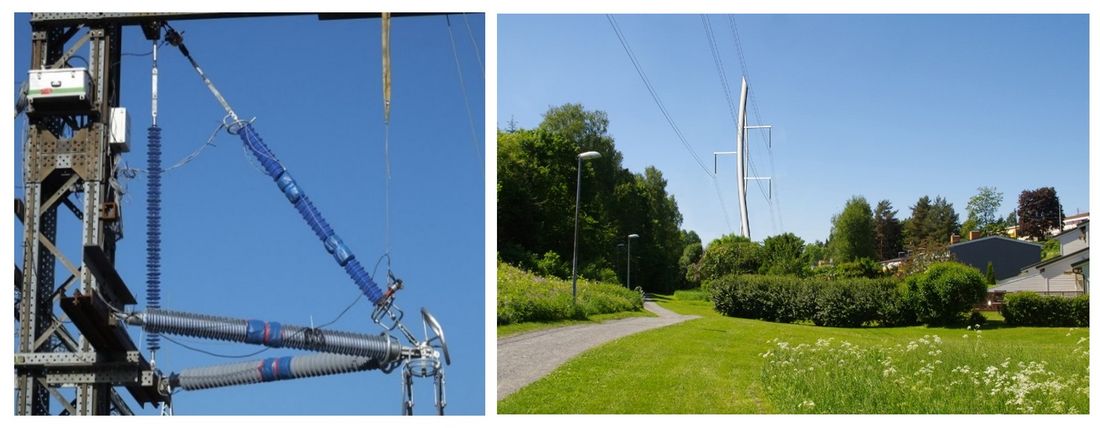
Case study Germany 400kV compact line, straw tower configuration considered for Norway
Another requirement for increased voltage stress or compactness, is the reduced impedance levels which are prevalent with decreased phase spacing, increased number of sub-conductor bundles or expanded bundle designs. This reduced line impedance allows for an increased power flow down the line. These techniques can be used to match the impedance and hence power flow in corridors or it can increase the power flow without series compensation in longer lines.
This brochure explains the concept of compaction for reduced right-of-way as well as increased power flow. Increased power flow can be realised by bundle expansion and phase compaction or by increase line voltage. All result in increased electric fields and other effects which are necessary to manage in the design of a compact line.
TB 788 - Dynamic loading effects on overhead lines- Impact on foundations
The primary objective of the TB is to provide an overview of the various load transfer mechanisms and general foundation behaviour due to repeated/dynamic loading on foundations. To achieve this objective, the WG prepared a literature review outlining the effects of dynamic loads on foundation. The triggering dynamic loads are – Gust wind, Earthquake Loads, Broken wire conditions and Ice shedding and Conductor galloping. The brochure provides the information on both static and dynamic load transfers to foundations from the wire-support and structure support systems and the mechanism of load transfer. The knowledge gained from the studies carried out in understanding the behaviour of other civil engineering infrastructures is reviewed carefully and summarized in providing guidance to the design of overhead line foundations under dynamic/cyclic loadings. The information presented is applicable to high voltage lines at all levels.

Typical foundation types used in various countries
The following publications are expected additionally till end of 2021:
- WG B2.40 - Calculations of the electrical distances between live parts and obstacles for OHL: Preparatory studies for revision of IEC standard (IEC61865 –IEC60826 –EN50341)
- WG B2.69 - Coatings for Power Network Equipment

Green Book
“Electricity Supply Systems of the Future”, 2020. All 16 Study Committees of CIGRE contributed to this Green Book. The authors of chapter “Overhead Lines” are from B2.
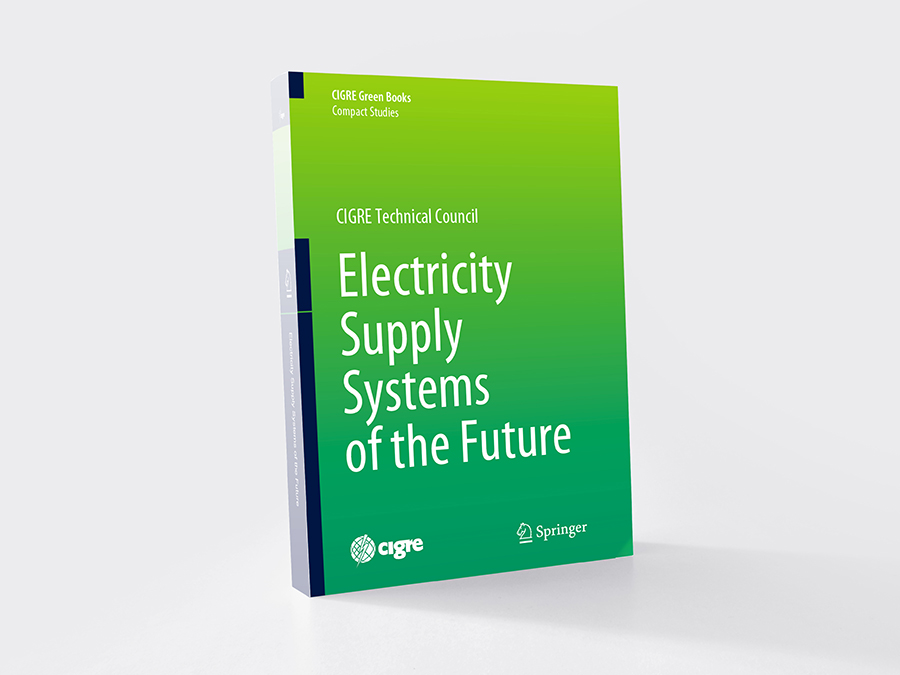
The Green Book is available for purchase on our partner's website Springer.
If you are a CIGRE Member, please contact us to benefit from a 40% discount on your purchase.
CIGRE Science & Engineering
CIGRE “Science and Engineering CSE” published 3 articles with relevance for SC B2:
- CSE 18: Improved conductor endurance limit by using a clamp with conical elastomers
- CSE 18: Aeolian Vibrations of Overhead Transmission line Bundle Conductors During Indoor Testing, Part A: Validation of excitation techniques
- CSE 18: Aeolian Vibrations of Overhead Transmission line Bundle Conductors During Indoor Testing, Part B: Assessment of Fatigue and Damping Performances
Tutorials & Webinars
All Tutorials (and webinars of course) were by video systems
- Transmission Line Structures with Fibre Reinforced Polymer FRP Composites, TB 818
- Compact AC line design, TB 792
- Conductors for the uprating of existing OHL, TB 763
- Review of electrical and mechanical loading combinations for maximum ground / obstacle and Right-of-Way impact considerations, WG B2.40
- State of the art on Spacers and Spacer Dampers used on overhead transmission lines with bundled conductors, TB 277, Green Book “Overhead Lines”
Coming planned tutorials/webinars are
- 2021 August CIGRE Centennial Session Paris, tutorial ”State of the art on sustainability of OHL conductors and fittings - conductor condition assessment”
- 2021 November, Ljubljana, Slovenia, Symposium ”Reshaping the Electric Power System”, tutorial ”Inspection and Testing of Equipment and Training for Live-Line Work on Overhead Lines”
CIGRE Awards
The 2020 CIGRE Award Medal went to Dr. Konstantin PAPAILIOU, Switzerland, former Chair of SC B2, contributions in several WGs, Founder and Chief Editor of CIGRE Science and Engineering CSE, Founder of CIGRE Green Books
The 2020 CIGRE Fellow Award went to Prof. Masoud FARZANEH, Canada, Convener of Working Groups B2.28, B2.44, B2.69, Main contributor to TB 438, TB 631, TB 179, TB 645
The 2020 CIGRE Technical Council Award went to Dr. Pierre VAN DYKE, Canada, Chairman of Technical Advisory Group TAG06, Convener and member in several Working Groups.
